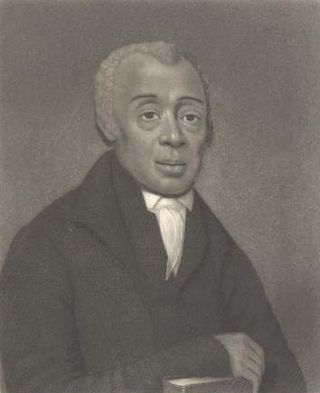
Richard Allen was a minister, educator, writer, and one of the United States' most active and influential black leaders. In 1794, he founded the African Methodist Episcopal Church (AME), the first independent Black denomination in the United States. He opened his first AME church in 1794 in Philadelphia.
National Community Church (NCC) is a Pentecostal multi-site megachurch located in the Washington, D.C. area, pastored by Mark Batterson. It is affiliated with the Assemblies of God USA.

The Methodist Episcopal Church Board of Temperance, Prohibition, and Public Morals was a major organization in the American temperance movement which led to the introduction of prohibition in 1920. It was headed for many years by Clarence True Wilson.
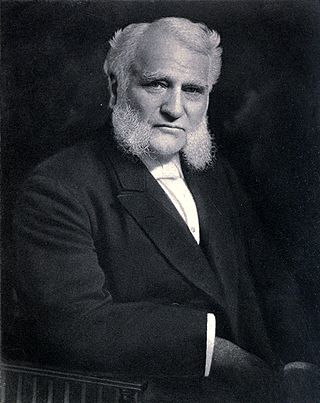
Joseph Crane Hartzell was an American Missionary Bishop of the Methodist Episcopal Church who served in the United States and in Africa.
Wallace Augustus Rayfield (1874–1941), was an American architect and educator. He was the second formally educated practicing African American architect in the United States.

Daniel Alexander Payne was an American bishop, educator, college administrator and author. A major shaper of the African Methodist Episcopal Church (AME), Payne stressed education and preparation of ministers and introduced more order in the church, becoming its sixth bishop and serving for more than four decades (1852–1893) as well as becoming one of the founders of Wilberforce University in Ohio in 1856. In 1863, the AME Church bought the college and chose Payne to lead it; he became the first African-American president of a college in the United States and served in that position until 1877.

St. John African Methodist Episcopal Church was the first church for African Americans in Nebraska, organized in North Omaha in 1867. It is located at 2402 North 22nd Street in the Near North Side neighborhood. The building is listed on the National Register of Historic Places. The building was constructed in the center of Omaha's North Side in the Prairie School architecture style. Prairie School architecture is rare, and this architectural gem in urban Nebraska is particularly unusual for being designed and built in the 1920s, after the Prairie Style's rapid loss of popularity beginning after 1914.

Christ Church — known also as Christ Church, Washington Parish or Christ Church on Capitol Hill — is a historic Episcopal church located at 620 G Street SE in Washington, D.C., USA. The church is also called Christ Church, Navy Yard, because of its proximity to the Washington Navy Yard and the nearby U.S. Marine Barracks.

John A. Lankford, American architect. He was the first professionally licensed African American architect in Virginia in 1922 and in the District of Columbia in 1924. He has been regarded as the "dean of black architecture".
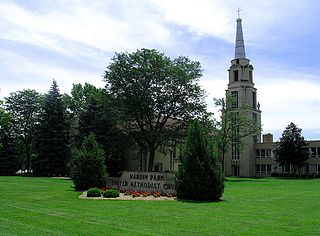
Nardin Park United Methodist Church is a Methodist church situated in Farmington Hills, Michigan. Nardin Park was first formed in 1927 by the union of two large churches in northwest Detroit - the Grand River Avenue Church, established in 1891, and the Ninde Church, organized in 1886. The name 'Nardin Park' was taken from the park and the subdivision where the church was located Nardin Park United Methodist Church was officially listed in Michigan's register of historic sites on September 21, 1990.
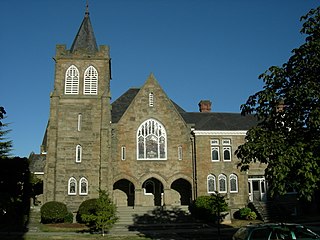
First Methodist Protestant Church of Seattle is an historic building, originally built and used as a church, at 128 16th Avenue East in Seattle, Washington.

Emma V. Brown was an American educator and activist for racial equality. In 1864, she became the head teacher at Lincoln School, the first public school established in Washington, D.C. for the education of black students.

Bishop Singleton T. Jones was a religious leader in the African Methodist Episcopal Zion Church. When he was ten years old, he was apprenticed to a lawyer and worked for him for four years, after which he found positions at an inn, as a hod carrier, and on a riverboat on the Ohio River. He became a pastor in the 1840s, serving churches throughout Pennsylvania, New Jersey, Maryland, and the District of Columbia. Although he had little education, he taught himself to be an articulate orator. Besides being a pastor to churches, he also edited AME Zion publications, the Zion's Standard and Weekly Review and the Discipline.
Israel Metropolitan Christian Methodist Episcopal Church is a Christian Methodist Episcopal Church in Washington, D.C. It was the first independent African American church of the city.

Lincoln School, established in 1864, was a school for African American students in Washington, DC. The school was built after students outgrew classroom space in nearby Little Ebenezer United Methodist Church.
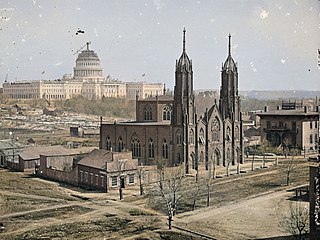
Trinity Episcopal Church was an Episcopal church that stood from 1851 to 1936 on the northeast corner of 3rd and C Streets NW in the Judiciary Square neighborhood of Washington, D.C.

The First African Baptist Church is a church located in South Philadelphia, Pennsylvania founded in 1809. It was the first African American Baptist congregation in Philadelphia and Pennsylvania, and the fifth African American congregation to be founded in Philadelphia. It was founded by 13 former congregants of the primarily white First Baptist Church of Philadelphia whom were ex-slaves from the eastern shore of Virginia. The split was cordial with the Church being immediately recognized by the Philadelphia Baptist Association. The church went through three locations in the Spring Garden neighborhood, and then to a location in the current Chinatown neighborhood of Philadelphia.















